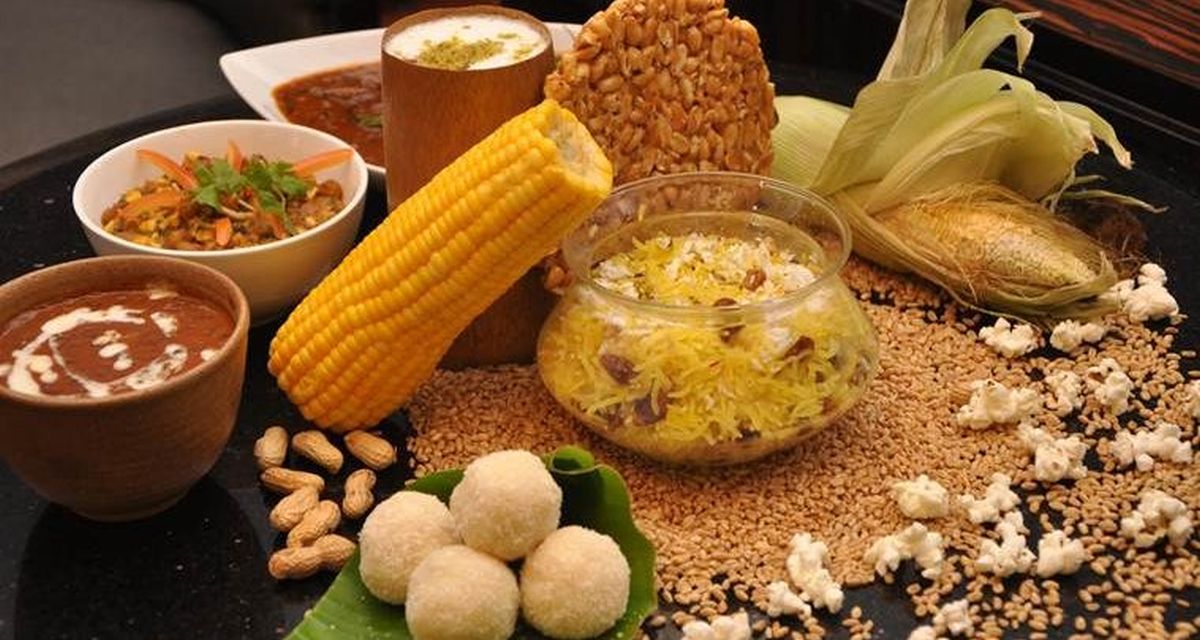The importance of poush nabanna on Sankranti day
The traditional Poush Parbon or Nabanna utsab during the auspicious day of Makar Sankranti brings happy tidings to all, of abundance of newly-harvested paddy and crops.
Makar Sankranti is one of the most auspicious days for Hindus when they take a dip in holy rivers; it’s also a day to enjoy, feast, donate and meditate

(Photo Source: Pinterest)
Each Indian festival has its own unique way of celebration and people follow the traditions while celebrating the same. Makar Sankranti is a special occasion of feasting or celebrating usually with a religious focus. It is also associated with harvest time. A time to embrace all the hard work done in the past season and to celebrate its rewards and fruits.
Celebrated with different names and in innumerable ways due to the diversity of culture, this festival is also known as Pongal, Uttarayana, Lohri, Khichdi, Maghi, Makar Sankranmana, Bhogali Bihu and Shishur Saenkraat. Kumbh Mela in Allahabad at the confluence of the holiest Ganga and Yamuna rivers, Ujjain, Haridwar and Nashik is the biggest attraction of this festival. It is held every 12 years at one of these four holy locations. The Magha Mela or mini Kumbh Mela is held every year at Pryagraj (Allahabad).
Advertisement
On this day, a major kite festival is also held in Gujarat. The festival here lasts for two days. The first day is celebrated on January 14 and called Uttarayan. On this day kite flying contests are held across the state and people engage in kite fights. The next day is known as Vasi and dishes like Undhiyu and Chikki are being made to celebrate the occasion.
Advertisement
Sesame seeds and jiggery play a significant role in Sankrant celebration. Families and sweet shops prepare delicacies made of sesame seeds and jiggery like til khoya laddoo, gajjaks and chikkis. Since time immemorial, til (sesame seeds) and gur (jiggery) have played a significant role. They are also prized in Ayurveda as the two most inter-perfect that help to keep body warm and increase immunity at the same time. The oil present in sesame seeds helps generate body heat and keeps the internal body temperature from dipping. At the same time, jiggery’s iron and vitamin C contents have also been used as traditional remedy for respiratory diseases or throat problems. These two food items give the festival its true flavour. This festival is also incomplete without the customary offering of sesame seeds and jiggery to Brahmins that is to be made in a traditional copper vessel. Another tradition is that the use of sesame seeds by putting the same in the sacred pyre symbolises a prosperous future. This also keeps the fire burning in all its vigour. Hence on this auspicious festival, it is ensured that this ritual is carried out. Apart from its healthy and nutritional nature, the combination of two will definitely appeal to your taste buds. Donating sesame delicacies is also considered very auspicious. This tradition is believed to be carried forward so as to wish the other person good luck.
For Hindus, ‘dana’ (donation) is an important part of one’s religious duty on Makar Sankranti. It is believed that each person has a ‘dharma’ (duty) towards his family, friends, society, the world and all living beings. On Makar Sankranti, the mighty Sun begins its journey from Sagittarius to Capricorn during the winter solstice, indicating the start of warmer days. If you are looking to dial up your good deeds of the year, it would be a great idea to donate khichdi (green moong chilka and rice combo dish) on Sankranti to the needy. You can also donate pure ghee, oil, salt and spices (ingredients used in preparing khichdi) and jiggery to the poor people.
Since the harvest festival is dedicated to the Sun, it would be great to be outdoors and bask in the warm sunshine. Cook the ultimate winter comfort food, khichdi (made of two important grains rice and pulses) and eat with family and friends sitting on your terrace. Climbing out to your terrace on the khichdi festival, you can also feast your eyes on a sky filled with riot of multi-hued kites.
Besides, take a spiritual bath, donate and meditate to celebrate nature’s generosity and the imminent arrival of spring. Generally Sun affects all the ‘rashis’ (zodiac signs) but the entry of the Sun in Kark and Makar is very fruitful as per religious sentiments. This entry and exit process is of six months each. From this day nights start to be smaller than days. Longer day means more light and smaller night means less darkness. So the day is considered as movement from darkness to light. Hence Sun is worshipped and offered khichdi.
Advertisement